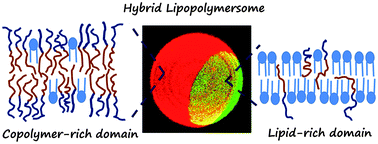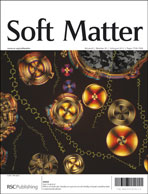The design of novel, soft membrane structures with chemical and physical properties that are tunable across a broad spectrum of parameter space is important for the development of new functional materials. Many potential applications of these novel membranes will likely require biocompatible interfaces, e.g., for functional reconstitution of integral proteins. Here we investigate the formation and control of compositional heterogeneities in hybrid lipo-polymersomes (HLPs) created by mixing the diblock copolymer poly(butadiene-b-ethylene oxide) with common natural lipids, e.g., 1,2-dipalmitoyl-sn-glycero-3-phosphocholine or 1,2-palmitoyl-oleoyl-sn-glycero-3-phosphocholine. Mixing and de-mixing of lipid-rich domains from the polymer-rich matrix of hybrid vesicles is controlled via thermally driven phase separation and by the inclusion of cholesterol. Domain size and morphology can be controlled by cooling rate and lipid composition, respectively. Macromolecular additives, e.g., cyclodextrins, enzymes and surfactants, can be used to remodel the hybrid membrane and its domains, resulting in domain dissolution, controlled release of contents or rupture of the hybrid vesicles. These composite membranes are promising materials for encapsulation-based technologies that require the combination of biocompatible membrane environments and enhanced structural stability, e.g., delivery and sensing applications or controlling (bio)chemical reactions within confinement.


 Please wait while we load your content...
Please wait while we load your content...